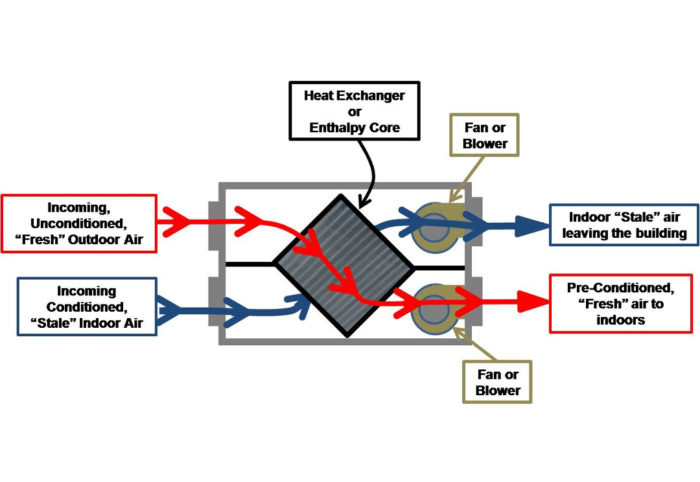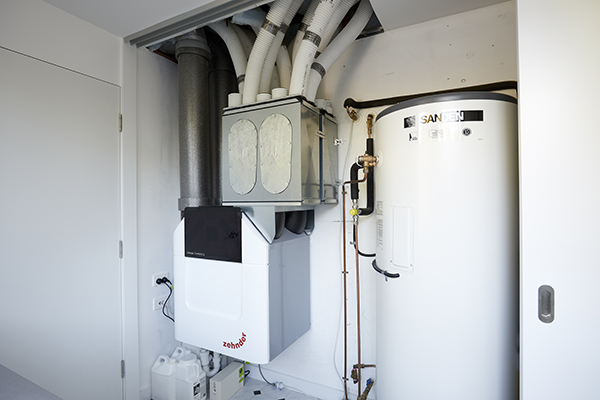Action Plan: What to Consider Before Choosing HRV
Wiki Article
The All-Inclusive Overview to the Uses of Heat Recovery Ventilation in Modern Structures
Heat Recovery Ventilation (HRV) systems stand for a significant development in developing modern technology (HRV Heat Recovery Ventilation). They provide an approach for exchanging stale interior air with fresh outdoor air while lessening energy loss. This technique not only improves interior air top quality but likewise adds to energy effectiveness in both household and business buildings. Comprehending the different applications and benefits of HRV can expose its important function in modern layout and sustainability initiatives. The implications of this technology are worth exploring additionallyRecognizing Heat Recovery Ventilation Equipments

Although lots of modern buildings focus on energy performance, understanding warm healing ventilation (HRV) systems is vital for optimizing indoor air high quality and lowering energy consumption. HRV systems function by moving warmth from stagnant interior air to inbound fresh air, properly preserving comfortable indoor temperatures while reducing energy loss. These systems consist of a heat exchanger, followers, and ductwork that help with the blood circulation of air. Throughout wintertime, HRV units capture and reuse heat from the outbound air, while in summer season, they can assist cool down incoming air. By constantly exchanging air, HRV systems likewise lower humidity and the focus of interior toxins. Proper installment and upkeep of HRV systems are important for their effectiveness and effectiveness in improving total structure performance and convenience.
Advantages of Heat Recovery Ventilation
Heat recovery ventilation systems offer many benefits that improve both power performance and interior air top quality in modern-day structures. By catching and recycling energy from exhaust air, these systems significantly minimize heating & cooling prices, bring about lower energy consumption. They keep a constant circulation of fresh outside air, decreasing the danger of indoor air pollutants and allergens. This constant exchange helps control moisture levels, stopping mold and mildew development and guaranteeing a healthier living setting. Furthermore, HRV systems add to sustainability objectives by reducing total carbon footprints. Their capacity to optimize air flow without giving up thermal comfort makes them a beneficial addition to contemporary structure style, promoting both financial and environmental benefits.Applications of HRV in Residential Buildings
As homeowners progressively prioritize power efficiency and indoor air high quality, the applications of heat recovery ventilation (HRV) systems in domestic buildings have actually become extra widespread. HRV systems are specifically advantageous in securely sealed homes, where keeping fresh air circulation is vital for protecting against moisture build-up and interior toxins. They successfully move heat from outward bound stale air to inbound fresh air, decreasing power expenses related to heating and cooling. In addition, HRVs can boost comfort levels by regulating moisture and temperature. They are likewise versatile for different domestic designs, including single-family homes and multi-unit buildings. Overall, incorporating HRV systems supports sustainable living techniques while ensuring a much healthier interior environment for passengers.HRV in Industrial and Commercial Settings
In industrial and commercial settings, the application of warm healing air flow (HRV) systems has become increasingly critical for optimizing energy performance and maintaining air quality. These systems efficiently move heat from exhaust air to inbound fresh air, decreasing the demand for extra home heating or cooling. This not just decreases energy prices however also adds to sustainability campaigns. Industries such as production, warehousing, and workplace structures profit significantly from HRV systems, as they help regulate temperature and moisture levels, making certain a comfortable and productive setting. HRV systems aid in getting rid of impurities and excess dampness, boosting interior air top quality. As policies around air high quality end up being more stringent, the fostering of HRV modern technology is most likely to grow, making it a crucial component of modern-day commercial and commercial framework.Future Patterns in Heat Recovery Ventilation Innovation

Often Asked Concerns
Exactly How Does Heat Recovery Ventilation Impact Indoor Air Quality?
Heat recovery ventilation considerably improves indoor air quality by continuously trading stagnant indoor air with fresh outside air while recovering energy. This process minimizes here are the findings pollutants, maintains suitable humidity degrees, and ensures a healthier setting for owners.Can HRV Systems Be Installed in Existing Buildings?
HRV systems can without a doubt be set up in existing structures. Retrofitting may require adjustments to ductwork and air flow designs, but it substantially boosts energy effectiveness and indoor air top quality, making it a sensible option for older structures.What Maintenance Is Required for HRV Systems?

Are There Details Climates Where HRV Is A Lot More Efficient?
Heat recovery ventilation systems are especially efficient in climates with significant temperature level distinctions in between periods. These systems enhance energy efficiency by recuperating warm from exhaust air, making them ideal for both cold and reasonably cozy atmospheres.How Do HRV Solutions Affect Energy Expenses?

Report this wiki page